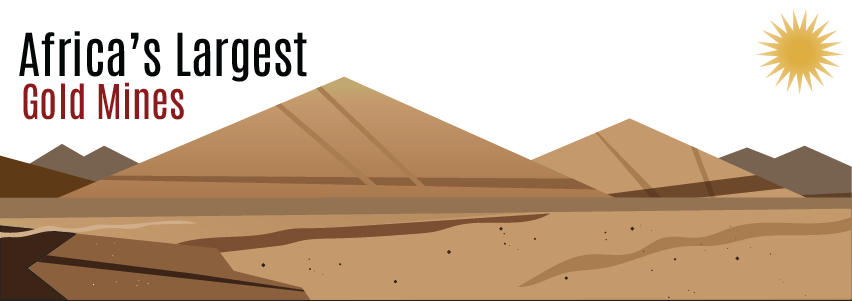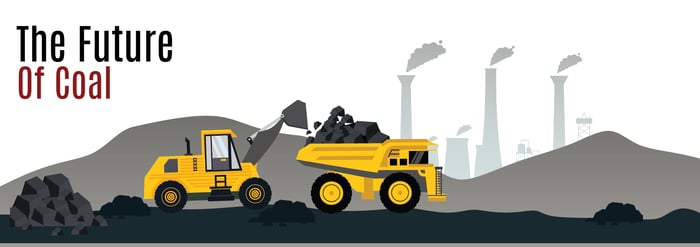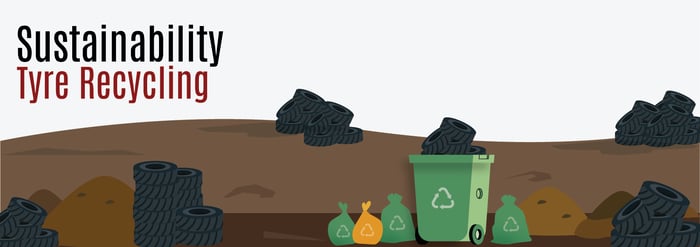Africa's Largest Gold Mines
Business News • 8 min read • Mar 8, 2023 2:54:34 PM • Written by: Natasha Osborne

There are two main categories of modern mining: surface mining and underground mining. In surface mining, the ground is blasted to allow ore’s close to the Earth’s surface to be removed and extract the minerals.
Mining Methods
There are two main categories of modern mining: surface mining and underground mining. In surface mining, the ground is blasted to allow ore’s close to the Earth’s surface to be removed and extract the minerals. Several methods can be used, depending on the extraction requirements. The five most common ones are: open pit, high wall, dredging, strip mining and mountaintop removal. Typically, surface mining extracts coal, copper, aluminium, and iron.
Underground mining, as it suggests is deep below the earth, tunnels are blasted to reach the ore deposits. There are three classes within underground mining: supported, unsupported and caving methods. The classes reflect the need of the orebody and host rock, is it stable to be kept open for an extended period, or will it fall. If so, it may require artificial support.
Largest Gold Producers in Africa
So, lets investigate some of the largest gold mine sites in Africa, learn where they are located, what type of mine site it is and how much gold they extract each year.
Geita, Tanzania
Geita Gold Mining Limited is one of AngloGold Ashanti’s flagship mines and is in North-Western Tanzania in the Lake Victoria, around 120km from Mwanza City. Since 2000 it has been in operations as a large-scale mine, however, mining has taken place since the 1930s. It is currently mined as both an open-pit and underground operation.
Mineral Resources: 8.23Moz
Gold Production: 486Koz
Workforce: 5,884 (Including contractors)
Tarkwa, Ghana
The site has been operated by Gold Fields Group since 1993 and is the flagship mine site. Tarkwa is the single largest open pit mine in Ghana with a steady production of 500,000oz of gold annually.
Ore is processed utilizing a conventional CIL plant, with two gyratory crushers feeding a coarse ore stockpile and an auxiliary stockpile. Apron feeders supply the feed from both stockpiles via conveyors to the SAG mill, which then feeds the ball mill. Gold is recovered from solution by electro-winning and smelted in an induction furnace.
Fekola Mine
Owned by B2Gold (80%) and the State of Mali (20%), Fekola is an open pit mine in southwest Mali, on the border between Mali and Senegal. The site celebrated their grand opening of their ‘new life of mine plan’ on the 3rd of February 2018. The mine is estimated to contain probable mineral reserves of 43.8 million tonnes (Mt) grading 2.37 grams per tonne (g/t) gold containing 3.34 million ounces (Moz) of gold.
The Fekola Mine achieved a strong year in 2022, producing 598,661 ounces of gold, at the top end of the annual guidance range (of between 570,000 - 600,000 ounces) and 5% (30,866 ounces) higher compared to 2021.
Fekola uses the conventional open pit mining method, including drilling and blasting followed by loading and hauling. Run-of-mine ore from the open-pit operations and stockpiles is delivered to the gyratory primary crusher. Crushed ore is then transported by conveyors to a reclaim stockpile with a 10,000t live capacity.
The reclaimed ore is conveyed to a SAG ball crushing comminution circuit consisting of a primary semi-autogenous grinding mill, a secondary ball mill, and a pebble crusher. The grinding circuit output is thickened and treated in the leach and carbon-in-pulp (CIP) circuit for extraction and recovery of gold.
2022 Gold Production: 598,661oz
Loulo-Gounkoto, Mali
The site comprises of two distinct mining permits, Loulo and Gounkoto, and is situated in western Mali, bordering Senegal.
Société des Mines de Loulo SA (Loulo) owns the Loulo gold mine, and Société des Mines de Gounkoto (Gounkoto) owns the Gounkoto gold mine. Both Loulo and Gounkoto are owned by Barrick (80%), and the State of Mali (20%).
2022 Gold Production: 547,000oz
Kibali, DRC
Kibali is one of the largest gold mines in Africa, it’s situated in the Democratic Republic of Congo, adjacent to the town of Doko. Kibali is co-owned by AngloGold Ashanti (45%), Barrick Gold Corporation (45%) and SOKIMO (10%), a state-owned gold mining company. The operation is run by Barrick.
Kibali is a combined open pit and underground gold mine. The site is made up to 10 mining concessions. The metallurgical plant comprises a twin-circuit sulphide and oxide plant with conventional carbon-in-leach (CIL), including gravity recovery as well as a float and ultra-fine grind circuit.
Anglo Gold Ashanti’s Shares:
Mineral Resources: 7.83Moz
Gold Production: 365Koz
Workforce: 2,454 (Including contractors)
Barrick’s Shares:
2022 Gold Production: 337,000oz
Emissions and Supporting the Communities
Geita, Tanzania
Geita is committed to the sustainable development of the communities surrounding the mine and has demonstrated this by actively partnering with the Government to improve social services including education, health, water, and roads as well as other economic activities for the community surrounding the mine.
- Malaria remains endemic in Geita, under the 2019 corporate social investment plan, the mine funded the roofing of 20 dispensaries, completed construction of 12 dispensaries and built four new dispensaries at Nyakato, Mgusu, Ibanda and Bihegule.
- Invested in health infrastructure with the Geita District Council in 2019 and 2020.
Tarkwa, Ghana
‘Rehabilitation is integrated into our mine planning process, with progressive rehabilitation plans in place to ensure continuous land reclamation throughout the life of mine.’
Tarkwa carries the practice of rehabilitation of areas that have been mined, restoring them to lush vegetation and productive farmlands as required, for use by our stakeholder communities.
Fekola, Mali
Fekola’s 2021 performance highlights:
- Updated our Climate Risk Management Strategy and completion of an inaugural Climate Strategy Report
- Completion of a Water Risk Statement
- Commenced operation of the Fekola hybrid solar plant
- 5% of total electricity consumed was from renewable sources.
- No fines or sanctions
Loulo-Gounkoto, Mali and Kibali, Mali
Loulo-Gounkoto and Kibali mine sites are part owned by Barrick. In 2021 they addressed areas that could improve their emissions. These include replacing light bulbs with energy efficient LED bulbs, switch off light’s campaigns, electric vehicle commuter program, and energy and heat recovery analysis at process plants and water conveyance infrastructure.
We hope you enjoyed this week's blog. Let us know your thoughts and what you'd like to hear about next! If you found the blog interesting, why not give it a share?
Reach the World. Giving Made Easy with Impact.
Related Articles

Business News
Achilles Oil and Gas Africa Membership

Business News
Electric Vehichles- The Impact on Mining

Tips & Tricks
Sustainability- Recycling Tyres
Don't Miss Out On A Thing
Sign up and Join Our Newsletter Today











